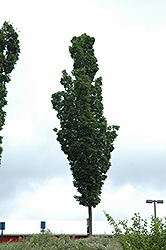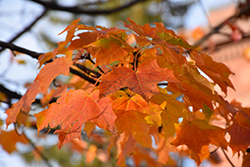Goldspire Sugar Maple
Acer saccharum 'Goldspire'
Height: 40 feet
Spread: 20 feet
Sunlight:
![]()
Hardiness Zone: 4
Other Names: Hard Maple, Rock Maple
Description:
A durable pyramidal to almost columnar tree, suitable for smaller landscapes; features good deep yellow to gold fall color, very adaptable to soils; great for adding some dynamics to the landscape silhouette or as an accent
Ornamental Features
Goldspire Sugar Maple is primarily valued in the landscape for its distinctively pyramidal habit of growth. It has rich green deciduous foliage. The lobed leaves turn outstanding shades of yellow, gold and orange in the fall.
Landscape Attributes
Goldspire Sugar Maple is a dense deciduous tree with a distinctive and refined pyramidal form. Its average texture blends into the landscape, but can be balanced by one or two finer or coarser trees or shrubs for an effective composition.
This is a relatively low maintenance tree, and should only be pruned in summer after the leaves have fully developed, as it may 'bleed' sap if pruned in late winter or early spring. It has no significant negative characteristics.
Goldspire Sugar Maple is recommended for the following landscape applications;
- Accent
- Shade
- Vertical Accent
Planting & Growing
Goldspire Sugar Maple will grow to be about 40 feet tall at maturity, with a spread of 20 feet. It has a low canopy with a typical clearance of 4 feet from the ground, and should not be planted underneath power lines. It grows at a slow rate, and under ideal conditions can be expected to live for 70 years or more.
This tree should only be grown in full sunlight. It prefers to grow in average to moist conditions, and shouldn't be allowed to dry out. It is not particular as to soil pH, but grows best in rich soils. It is somewhat tolerant of urban pollution. This is a selection of a native North American species.

